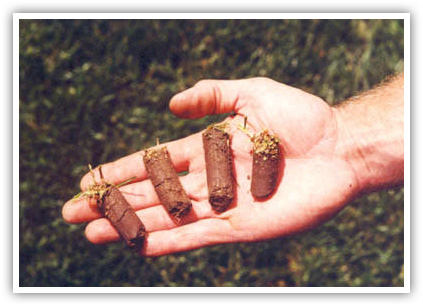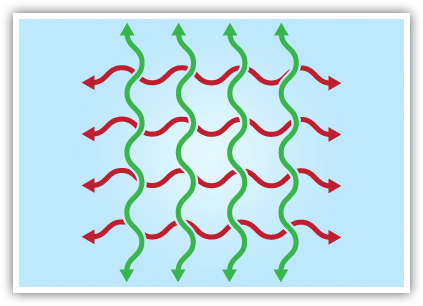
Core Aeration
Core aeration is a very important service and should be completed each year to promote a healthy root system. Southeastern clay soils become very hard and compact over time, reducing the ability of the grass to expand and receive nutrients. Warm season grasses such as Bermuda and Zoysia should be core aerated after spring green-up as the grass awakens from its dormancy stage.
What Is Core Aeration?
Core aeration is the process through which small soil plugs or cores are removed from the lawn. Most aeration is done mechanically by a machine with hollow tines or spoons mounted on a disk or drum. Known as a core aerator, an aeration machine extracts cores of soil from 1/2 to 3/4 inch in diameter and deposits them on your lawn. Aeration holes are typically 1-6 inches deep and 2-6 inches apart.
Why is this so important?

Soil Compaction Relief:
The most important reason to aerate your lawn is to reduce soil compaction. The ability of your grass to absorb and process water and nutrients is directly related to the depth and strength of the root system. Simply put, the stronger the roots of your grass, the healthier and greener your lawn will be. Soil compaction greatly reduces the pore space within the soil that would normally hold air, water, and nutrients which roots require to grow. Through conducting heavy core aeration each season, one strengthens roots while making the turf less susceptible to diseases and damage.
Increase Air, Water and Nutrients:
A second reason to aerate your lawn is to reduce thatch build-up. Thatch is the build-up of old grass clippings and organic matter. Eventually this material creates an impermeable layer above the soil surface. It is very difficult for water and nutrients to penetrate into thatch heavy soil. Thatch can prevent water and nutrient materials from penetrating beyond the ground surface and this leads to the roots of your grass only growing close to the surface. This makes the turf susceptible to damage and can cause grass to thin and dry out over time. Core aeration reduces thatch accumulation, minimizes its buildup and modifies its makeup by incorporating new soil into the thatch.
What is Double Aeration?
Double aeration consists of cross directional penetration holes across the turf surface. This will increase the amount of area through which the soil receives extra seed, water, air and nutrients. After a period of heavy drought or turf disease problems, this process may be required to sustain more uniform seed germination rates or be recommended to loosen up compacted soil.

End Results:
During the aeration process, your lawn will be dotted with hundreds of small plugs pulled from the soil. These plugs break down and redistribute soil throughout the lawn which introduces beneficial microorganisms that feed on the thatch and break it down. Within a week or two, these small plugs of thatch and soil break apart and disappear into the lawn. About 7 to 10 days after aeration, the holes will be filled with white, actively growing roots. These roots signify that the turf/grass is responding favorably to the additional oxygen, moisture and nutrients in the soil. Over time, repeated aerations enhance heat and drought stress tolerance levels.
The Benefits of Aerating your Lawn:
Aeration opens the soil to reduce soil compaction and minimizes thatch accumulation. Even if your lawn is lush, thick and green, you should core aerate each year. Aeration is best suited as a preventative measure rather than a corrective alternative.






